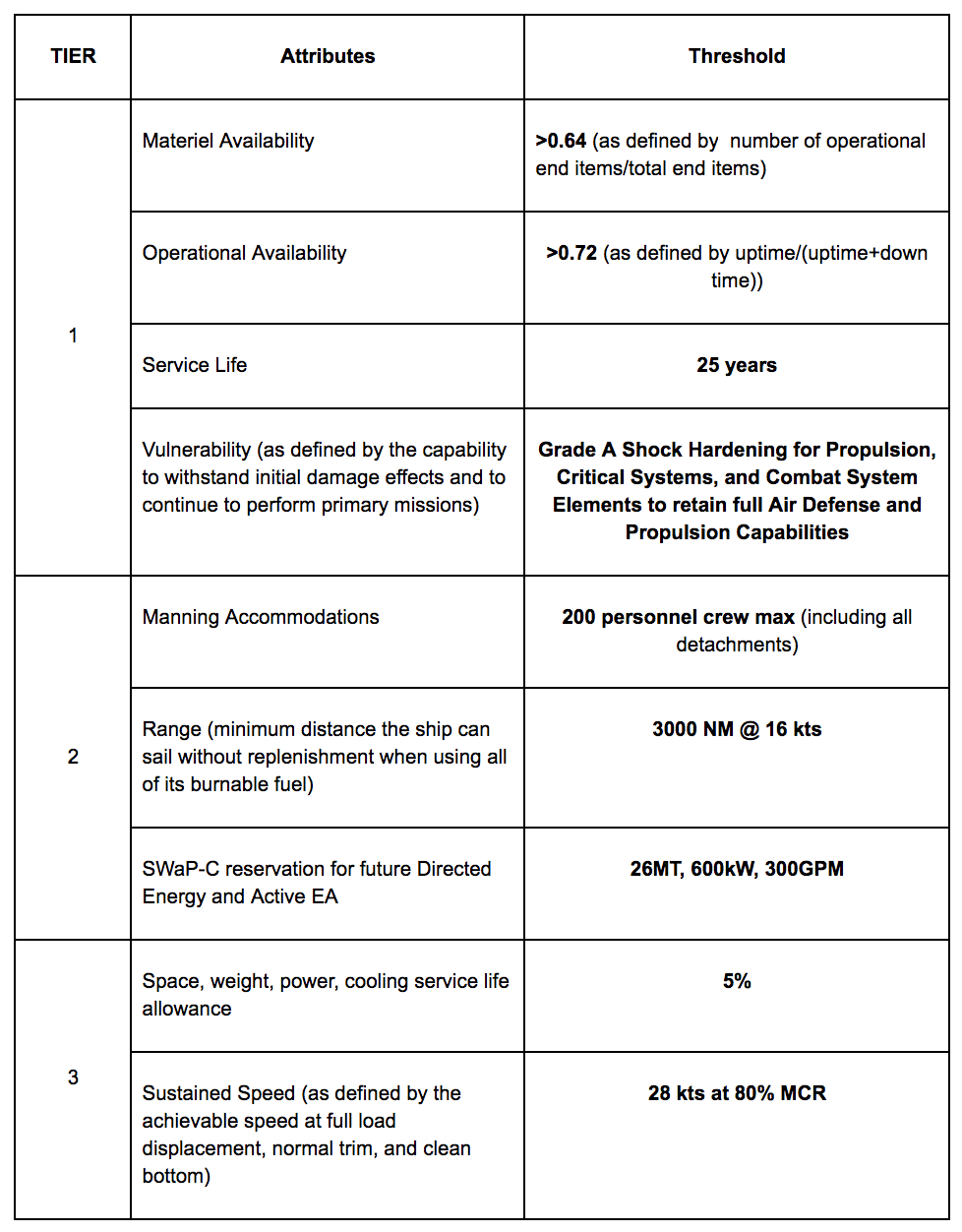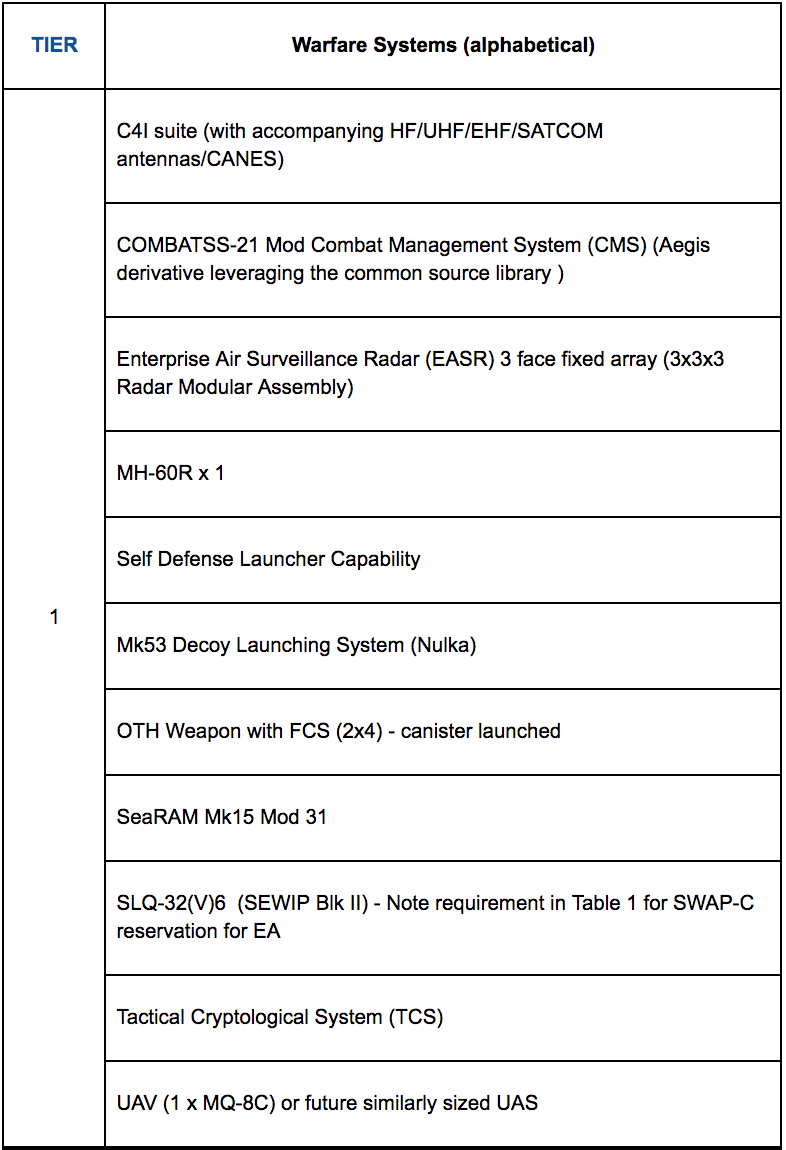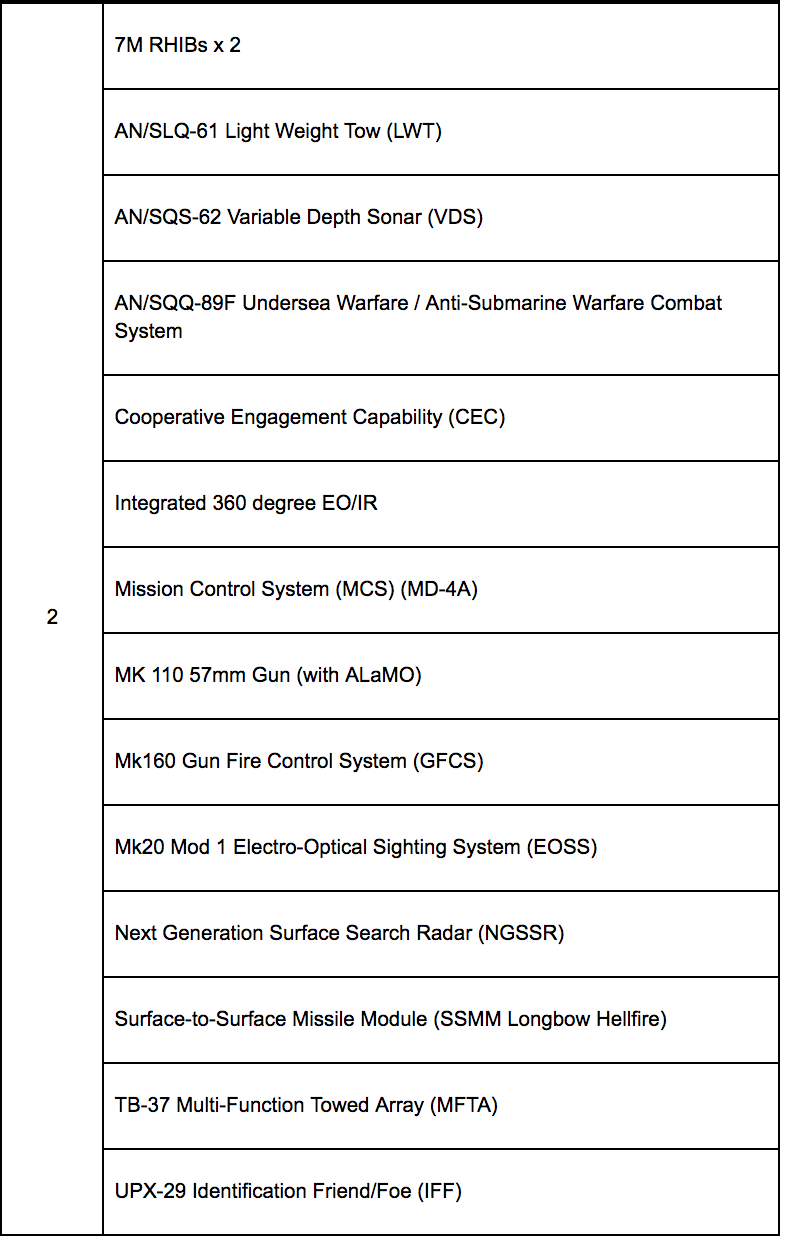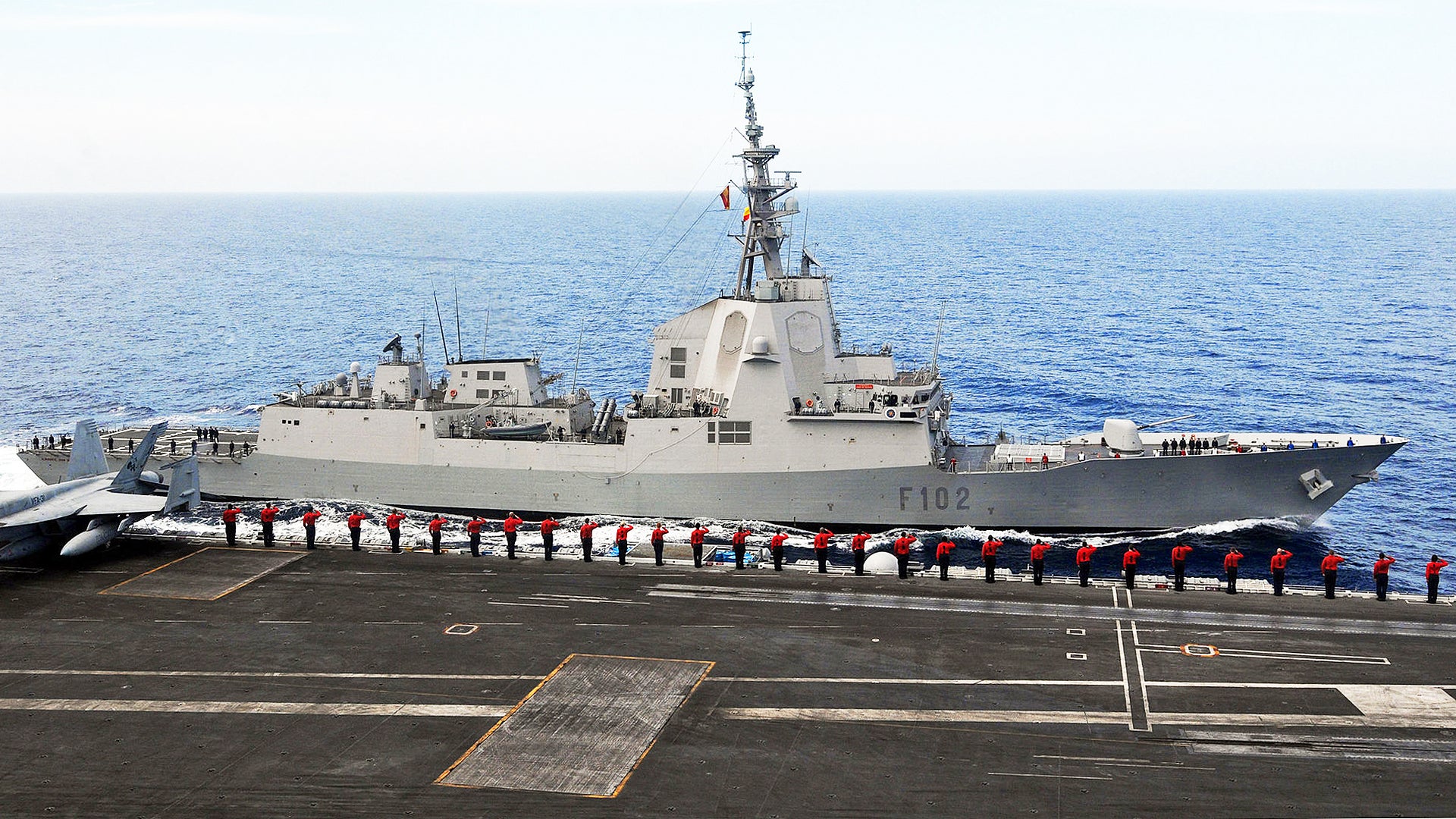As the U.S. Navy struggles to overcome multiple obstacles on its way to what it hopes will become a 355 ship Navy in the coming decades, the procurement of a guided missile frigate is becoming a top priority, and that’s a very good thing. Known as FFG(X), the program is really gaining steam with the Navy just announcing possibly the most important metric related to the entire program—what the Navy is willing to pay for each new frigate.
The project manager for the Navy’s future frigate initiative, Regan Campbell, stated on Tuesday that the Navy will be willing to fork over $950M for each of the 20 ships it currently plans on buying, aside from the first prototype ship that will cost more. This figure puts the notional FFG(X) squarely in the middle price-wise between an Arleigh Burke class destroyer and a Littoral Combat Ship, and that makes a lot of sense as the FFG(X) aims to bridge the glaring capabilities gap that exists between these two surface combatant types.
Defense contractors from around the globe are seeing this program as a rare opportunity to get a foothold in shipbuilding for the U.S. Navy, and multiple existing foreign designs could potentially be adapted for the Navy’s use. This is in addition to well-established domestic vendors that will be competing for the opportunity with their own designs as well. Supposedly about eight designs are being looked at by the Navy, all of which were submitted following the service’s initial RFP that was released last year.
Campbell told attendees of the Surface Navy Association’s annual conference and trade show that the force is going to issue up to half a dozen preliminary contracts to entrants so that they can fully spec out their proposals based on more detailed forthcoming requirements. The final award is tentatively planned for 2020, with the first ship being delivered in 2023.
USNI reports Campbell said the following as to how the Navy plans on giving feedback about the designs it likes before selecting the winner:
“We’re going to have a technical review of each of these proposals by the end and provide them feedback in where these designs might need some buffing up to get to a full and open competition… You will see those requests for proposals by the fourth quarter of 2019 with an award in 2020.”

The good news is that the Navy is open to a license-built variant of an existing foreign design, and that the FFG(X) won’t be a some watered-down or wanna-be fighting ship—lessons learned from recent high-profile and partially failed projects, namely the Littoral Combat Ship and the Zumwalt class destroyer, are clearly at play in their decision making.
The initial requirement will be for the FFG(X) to feature 16 Mark 41 vertical launch system cells, but a target of 32 seems more likely. These cells will be stuffed with four Evolved Sea Sparrow Missiles each, or they could accept a single larger missile like the latest generation of SM-2 Standard missile. But the SM-6 in particular would give these frigates a highly flexible long-range weapon capable of air defense, terminal anti-ballistic missile defense, and even surface and land-attack. Deploying the Tomahawk cruise missile and ASROC anti-submarine missile might also be an option.
With 32 cells to play with, an FFG(X) could have its arsenal tailored to its mission. For anti-air warfare dominated missions, such as convoy escort duty, the ship could deploy with 48 ESSMs and 24 SM-2s or SM-6s. On a multi-role mission, such as an independent patrol, the vessels could deploy with 24 ESSMs, 12 SM-6s or SM-6s, 6 BGM-109 Tomahawk missiles, and 8 RUM-139 VL-ASROC anti-submarine missiles. For strike-oriented missions, the ships could deploy with 24 ESSMs and 26 Tomahawk missiles. Even without Tomahawk or ASROC capability, the ability to provide area air defense alone would take a lot of pressure off the Navy’s overworked destroyer fleet.
The ships will also be outfitted with a dedicated over-the-horizon surface strike capability, such as Kongsberg’s flexible Naval Strike Missile (NSM). This multi-mode missile could provide a standoff strike capability if the Tomahawk won’t be integrated as part of the ship’s final configuration. The NSM is competing to become the Navy’s next generation canister-launched anti-ship missile under an initiative called the Over The Horizon Missile program. Raytheon is also competing for the contract.
Some proposed FFG(X) entrants also include a short-range surface-to-surface missile capability to defend against swarm attacks, like the naval Longbow Hellfire missile being adapted for use by Littoral Combat Ships. This is laid out as a second-tier wanted capability in the Navy’s RFP. It may turn out that some of the designs can accommodate either 32 VLS cells or 16 VLS cells and a short-range surface-to-surface weapon system.

FFG(X) will also be equipped with a version of the Aegis derived COMBATSS-21 combat system, and the Navy wants the ship’s primary sensor to be a truncated version of the scalable Enterprise Air Surveillance Radar system, but there are other sensor systems contenders waiting in the wings. Saab in particular wants to try to get their latest version of the Sea Giraffe radar, which has been given the U.S. designation AN/SPS-77, included in frigate’s sensor suite, even if to supplement its primary radar system.
Saab vice president and general manager of the company’s sensor systems division, Jay Abendroth, said the following to Defensenews.com:
“Right now, EASR is the main surveillance radar on there… What they are going to expect the frigate to do does open a lot of potentials, because again it’s not just about air surveillance with this set of radars, it gets a lot more into the other missions—navigation and other things—that might not actually be required of EASR. There may be other radar or sensor packages that will do those missions as well.”
AN/SPS-77 is already being used by the Navy’s Littoral Combat Ship, and a modified version of it will be fielded on the US Coast Guard’s Offshore Patrol Cutters. It will also be installed on American supercarriers and landing helicopter docks as a secondary radar system.
The Navy’s new frigate will also be able to field at least one MH-60R and one MQ-8C, along with SeaRAM for close-in protection, two seven-meter RHIBs, two types of towed sonar arrays and one fixed variable depth sonar system, Mk110 57mm deck gun, the highly capable SLQ-32(V)6 electronic warfare suite, and a bunch of other baseline systems requirements you can see below:


We recently broke down the challenges facing the Navy when it comes to trying to realize its 355 ship fleet dream in the coming decades, and how the FFG(X) could very well help make that dream a reality. Seeing that a clearer picture is being painted of how well outfitted these ships will be, and the money the Navy is willing to spend on them, the possibility that once the design is operational and is deemed a success, the seagoing service could opt to divert more funds toward additional frigates beyond the 20 planned.
Without attempting to look too far into the future, it’s clear that the FFG(X), a vessel many of us have been begging for for years, is turning out to be one of the Navy’s most promising and downright exciting programs. Indeed, it looks like a frigate renaissance is underway within the U.S. Navy.
Better late than never.
Contact the author: Tyler@thedrive.com
